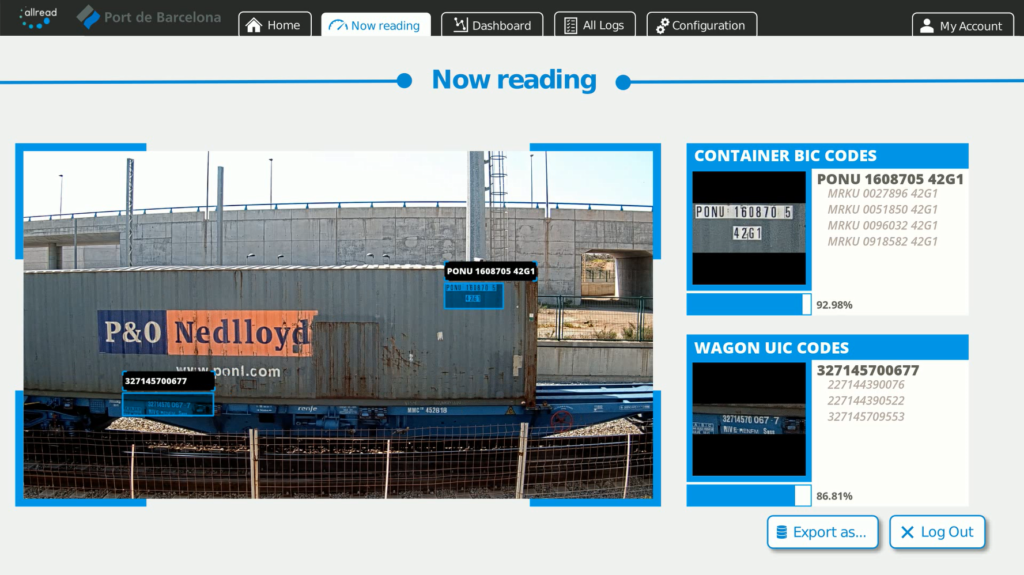Defining what a smart port is is not an easy task. Today, a whirlwind of technology, data and innovation is transforming businesses and industries, and ports are no exception. Smart ports make use of the most disruptive technologies to create more efficient and, as the name suggests, intelligent ecosystems.
We explain what a smart port is, what its advantages are, the technologies that make them a reality and which are some of the terminals that can already be labelled as smarts around the world.
What is a smart port? Innovation and automation
Smart ports are those that use innovative technologies and automation systems to improve their performance and optimise their operations. As pointed out in the ‘Smart Ports Manual, strategy and roadmap‘, by the Inter-American Development Bank (IDB), it is a concept linked to Industry 4.0 and the fourth industrial revolution.
Smart ports use disruptive technologies — such as IoT, big data, virtual reality, edge computing or artificial intelligence— to increase their efficiency, economic competitiveness, the safety of their facilities and their environmental, social and energy sustainability.

Characteristics of Smart Ports: technological and interconnected
However, it is very important to keep in mind that technology alone is not enough to create a smart port. According to the IDB, ports can be considered smarts when they become ecosystems with interconnected components that collaborate with each other and coordinate towards the same goal. These components include the workers themselves, the digital strategy, technology and sustainability plans.
Moreover, smart ports make real sense when they are integrated into a much broader framework. This includes their immediate environment, shipping companies and transport, supply and logistics networks, among other actors.
“Becoming ‘smart’ means becoming more attractive and competitive for customers and users as well as for the environment where the activity takes place”
Inter-American Development Bank
Advantages of Smart Ports
As the name suggests, the advantage of these ports is that their components coordinate with each other intelligently to achieve the best results. By leaving much of the action and decision making to the technology (which in turn is data-driven), it reduces labour times, manual tasks and margins for error.
Among the many advantages offered by the digitisation and automation of ports, the following can be highlighted:
1. Improved productivity and efficiency
Automation allows the maximum possible value to be extracted from assets and processes to be streamlined (e.g. reducing waiting times for trucks or ships in the vicinity). This leads to economic and profitability improvements, and opens the door to developing new revenue streams for both port entities and surrounding businesses.
2. More sustainability
Improving efficiency leads to increased social, economic and environmental sustainability. Ports have the potential to reduce their impact and contribute to meeting the targets of the ONU Sustainable Development Goals (SDGs) and the Paris Agreement to reduce greenhouse gas emissions and curb climate change.
3. Increased security
Smart ports are controlled environments and, as such, have the capacity to greatly reduce risks. They make it possible to anticipate maintenance tasks for installations and equipment, make forecasts, optimise work rhythms and monitor employees’ tasks, among many other things.
4. Promote the digitalisation of the environment
Due to their role in the logistics sector and their proximity to large population centres, ports are entities with great influence on the economic activities of their surroundings.
Therefore, smart ports can become agents of dynamism and boost the digitisation of nearby companies and entities, increase their productivity and resilience and contribute to creating new business models.
Technology transforms Ports into Smart Ports
Technology is one of the clear protagonists of smart ports. After all, it is what makes connectivity and coordination between the different components aligned to achieve their objectives possible.
These are some of the disruptive technologies and tools used by smart ports:
- Internet of Things and Industrial Internet of Things (IoT and IIoT, respectively)
- Big Data
- Artificial intelligence
- Cloud Computing and Edge Computing
- Drones
- Blockchain
- Machine Learning and Deep learning
- Virtual reality and augmented reality
- Robotics
- 3D printing
- Digital twins
- Autonomous vehicles

Examples of Smart Ports: from Barcelona to Los Angeles
Many ports around the world are undergoing a digital transformation to become smart environments. In this race to move towards digitisation, there are numerous strategies, paces and even targets, as each port is a unique ecosystem and different from the others.
In Spain, one of the ports leading the transition is the Port of Barcelona. In its IV Strategic Plan, it has set itself the objective of becoming the logistics hub of reference in the Mediterranean. As the Catalan port points out, this must be characterised by five attributes which define the smart concept: it must be sustainable, multimodal, agile, resilient and transparent.
To this end, they have OCR software based on artificial intelligence for monitoring rail traffic, a large deployment of IoT sensors, tools for monitoring port activity parameters and an automated waste management system, among other solutions.
Port of Barcelona, at the forefront of technological innovation
In 2020, the Port of Barcelona carried out a pilot project based on a machine learning technologies (MLT) system capable of identifying containers and wagons entering its premises in real time. This was possible thanks to the combination of Machine Vision and Deep Learning. During the time of the pilot test, 99% of the containers entering the port were identified, a much higher success rate than the average of other outdated solutions or traditional manual identification.

Port of Los Angeles: real time data on container arrivals
In the United States, the Port of Los Angeles has its Port Optimizer model. This software solution aims to improve supply chain performance by providing real-time information on container arrivals. It is a cloud-based solution reinforced by a machine learning system.
Port of Antwerp, in search of greater security with drones
On the other hand, the port of Antwerp (Belgium) is currently preparing a system of autonomous drones to maintain security in its facilities. These devices will be able to perform surveillance, monitoring, incident management and problem detection tasks, such as fuel spills in the port waters, for example. Part of their aim is that these drones can be connected to other elements of the facilities, thus extending their range of action.
The list does not end here. The ports of Hamburg, Rotterdam, Montreal or Singapore are others leading the race towards a future in which ports will be increasingly intelligent.
References:
- ‘Smart Ports Manual, strategy and roadmap’, by the Inter-American Development Bank (IDB)
- ‘IV Strategic Plan‘, Port of Barcelona.
Follow us and subscribe to our newsletter
If you want to keep up to date with the latest news from about technology in port logistics and utilities, subscribe to our newsletter. You will regularly receive the most important content and news from our blog in your mailbox.
Follow us also on our social profiles in LinkedIn, Twitter, YouTube, Instagram and Facebook.